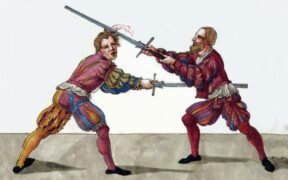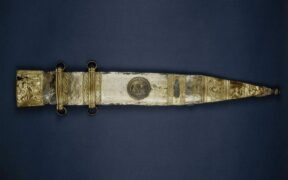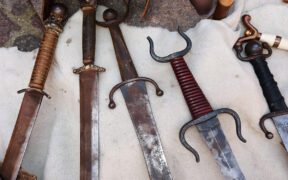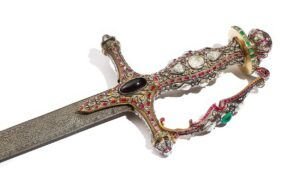Our content features commercial links to our products, committed to transparent, unbiased, and informed editorial recommendations. Learn More
Types of Sword Belts in Different Cultures
NO AI USED This Article has been written and edited by our team with no help of the AI
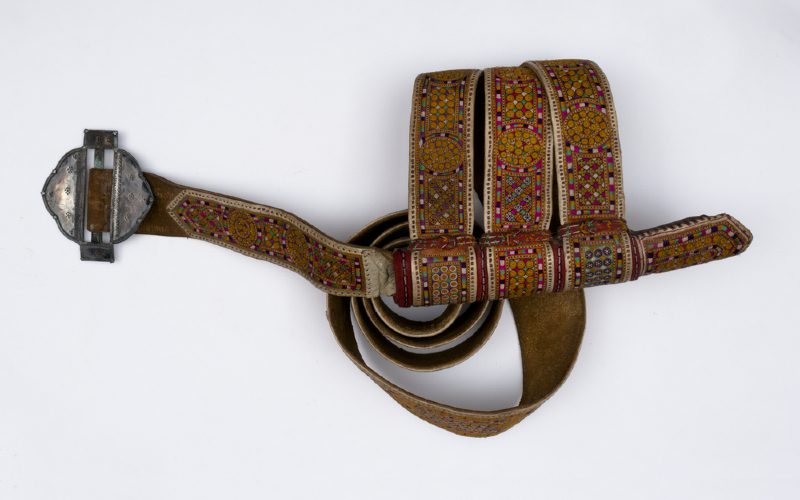
The sword was the most effective battlefield weapon that could be carried on the belt. Sword belts have been used since ancient times and remain a part of the military dress. Some types allowed the sword to be worn in baldrics over the shoulder or attached to waist belts while others had elaborate mounts with slings.
Let’s explore the different types of sword belts, how different cultures used them, and how they differ from sword frogs.
Types of Sword Belt
Warriors from different cultures wore their swords differently and sword belts varied from region to region. Sword belts may range from a baldric worn over the shoulder to a waist belt that carries a sword, a sling-like carrier suspended from a waist belt, and so on.
1. Baldric (Greek and Roman)
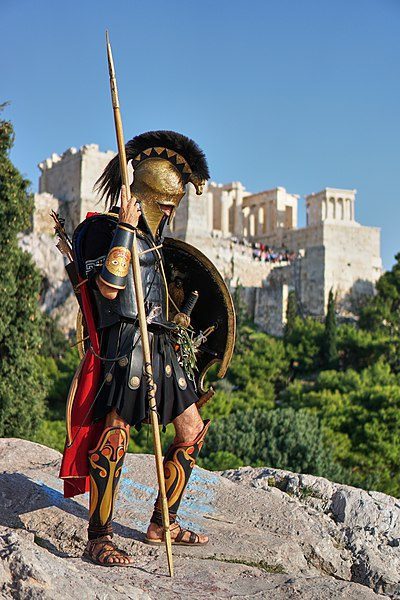
Several cultures from the Greeks to the Romans used a baldric for carrying their swords. A baldric is a sword belt worn over one shoulder, often supported by the right shoulder across the body. The Greeks wore their leaf-bladed xiphos sword beside the left hip with its hilt high on the chest. They also used another belt to carry their shields, and it laid over the other.
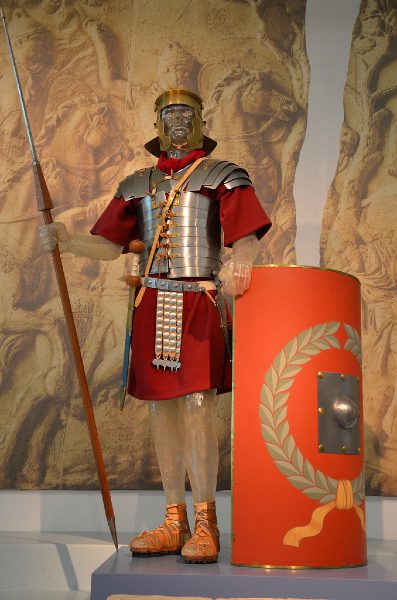
By the end of the 1st century CE, the Romans wore their short sword gladius suspended from a baldric. The Roman legionaries looped the baldric over their left shoulder. This puts the sword on the right side, sitting high on the chest. On the contrary, a Roman centurion, a commander of a centuria or a unit of 100 men, wore the sword on his left side to distinguish himself from the lower-ranking soldiers.
When the long sword spatha became popular among the Roman infantry, the soldiers wore it on the left side, which was on the opposite hip from the gladius, likely because of its relative length. Its scabbard was attached to a leather sword belt or a baldric, which could be adjusted by a series of buttons.
After the fall of the Roman Empire, wearing the sword attached to a belt became common, though baldrics remained traditional in the Eastern Empire. The Byzantine soldiers even carried their knightly swords in this fashion during the Middle Ages. In historical reenactments, re-enactors often secure the baldric under the waist belt to prevent the scabbard from entangling between the legs. It remains unknown whether the Romans used a similar approach.
2. Chain Sword Belt (Celtic)
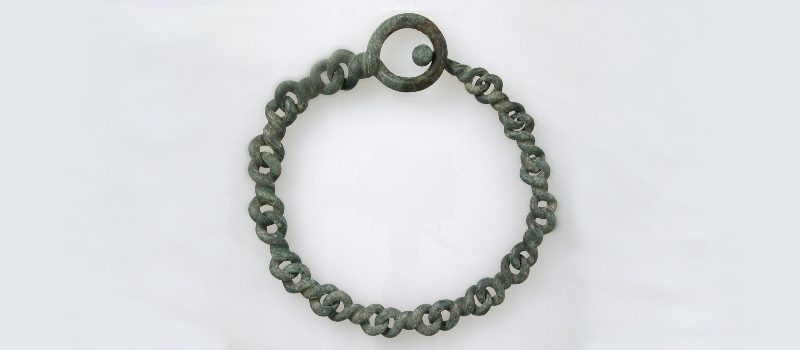
The Celtic warriors traditionally wore their swords on the right hip using a waist belt, usually a metal chain. The sword scabbard featured a suspension loop that allowed the chain belt to pass through it. The Celts also carried their shield in the left hand, so it would be impractical to wear the sword on the left. However, some Celtic tribes, including the Parisii of Yorkshire, carried their swords across the back and drew them from behind the head.
3. Medieval Sword Belt
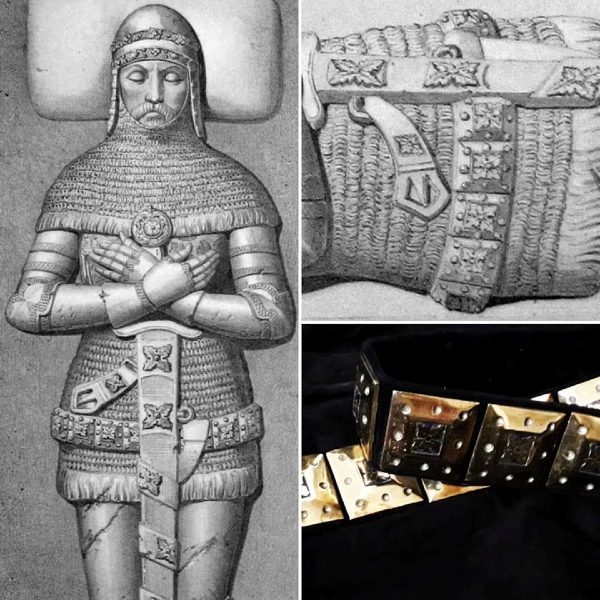
Medieval sword belts varied greatly throughout the Middle Ages. In the 11th century, during the Norman Conquest in England, the Normans carried their swords on the left side, with their scabbards attached to a simple waist belt or a strong cord. The hauberk, a full-length coat of mail, occasionally supported the scabbard which passed through the hole in the garment.
By the 14th century, it became common for medieval knights to wear their sword belts low on the hips, hence sometimes called a hip belt. Hip belts, sometimes bejeweled, were most common when medieval knights wore a combination of mail and plate armor. These knightly belts usually accommodated a sword and a dagger, often a misericorde or the so-called dagger of mercy.
By the 1420s, a diagonal sword belt gradually replaced the hip belt. This diagonal belt had one strap fastened to the scabbard locket and the second strap attached to a mount below. The other end of the strap was wrapped around the waist and then attached to the scabbard locket on the opposite side.
4. Islamic Sword Belts
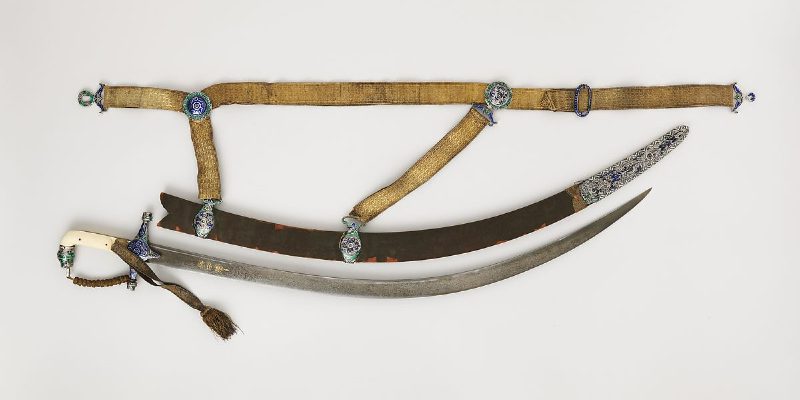
The Arabs carried the swords suspended from a shoulder belt, similar to a baldric. Eventually, the ʿAbbāsid caliph al-Mutawakkil favored the waist belt. In later Islamic periods, Muslim ruler Nureddin, also spelled Nūr al-Dīn, and his successor Saladin readopted the tradition, so shoulder belts retained their religious significance. It was common for Islamic swords to feature straps and belts that are usually made from embroidered canvas.
5. Obi (Japanese)
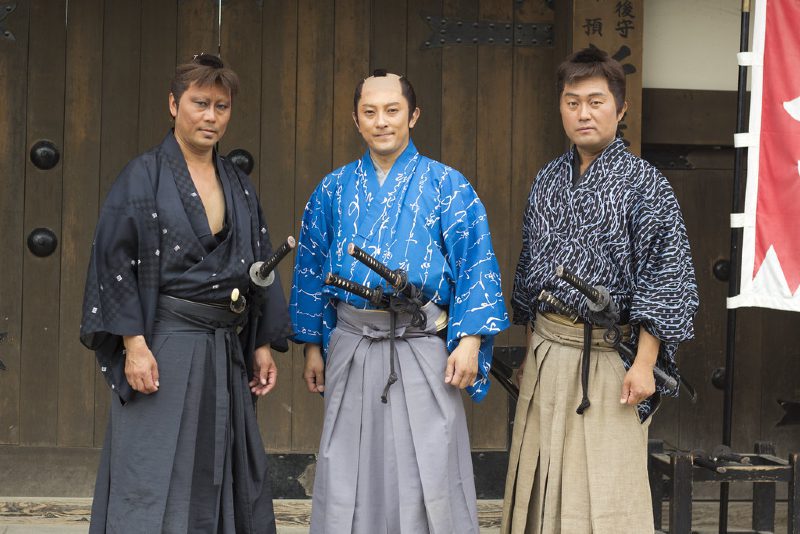
The samurai carried their swords thrust through the obi, a sash belt or waistband, often tightly worn while still allowing flexibility. The obi was wrapped around the waist, and the swords were placed between the folds of the belt. The scabbard also featured a sageo cord to secure it to the obi. Sageo cords, usually cotton or silk, also had several variations in wrap styles for display.
While the earlier tachi was worn slung from the obi attached by sageo cord with its edge downwards, the katana was worn thrust through the belt with the cutting edge facing up. The latter was sometimes attached to a sword hanger called koshiate fastened to the belt.
In iaido, martial arts practitioners use an iaito, an unsharpened practice sword and wears it on the obi. Generally, they wear a katana between the second and third layers of the obi. If it comes with a shorter sword, it is placed between the first and second layers. Miyamoto Musashi invented the style of fencing with two swords called nitō ichi-ryū, and he often wore the katana and wakizashi in the obi.
6. Rapier Sword Belt
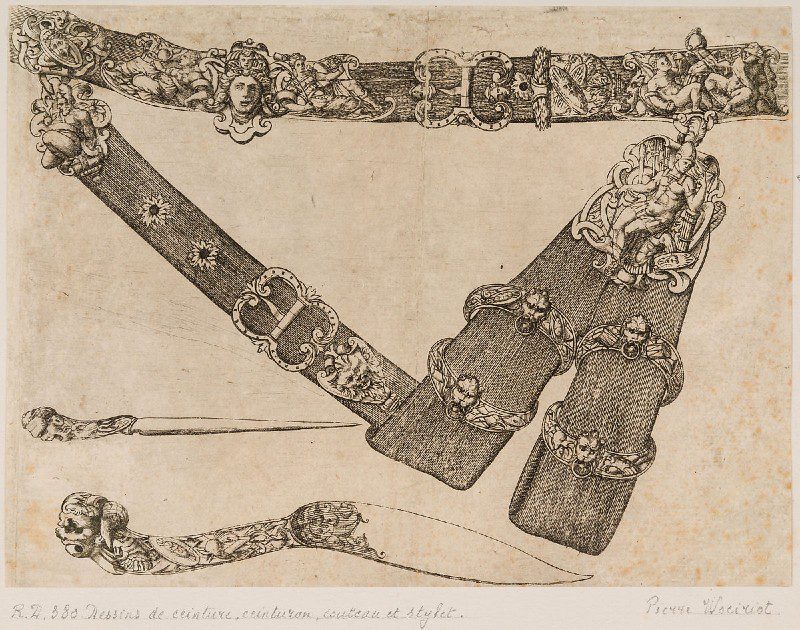
Throughout the 16th and 17th centuries, the rapier was the principal civilian sidearm often worn in a sword belt with elaborate mounts. The sword belt consisted of a waist belt, a diagonal side strap, and a sword hanger with two slings or loops. Its scabbard was held in these slings while the diagonal strap kept it at the desired angle.

The rapier sword belts often had silver or gilt bronze and were embroidered with designs that matched the decoration of the hilt or the wearer’s clothing. In the famous painting of Philip IV, king of Spain and Portugal, he wears parade armor with an ornate rapier on his left hip. The rapier scabbard is carried through a sling-like carrier suspended from a waist belt.
Sword Belt vs. Sword Frog
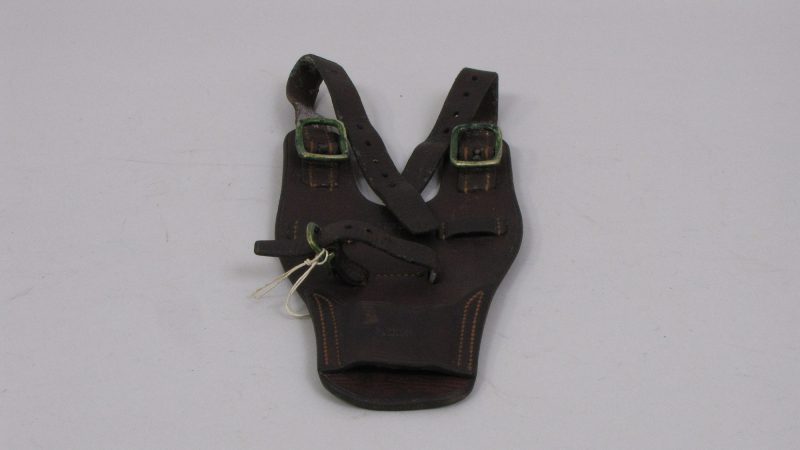
Sword belts varied from simple waist belts to shoulder belts and elaborate belts consisting of straps and slings. On the other hand, sword frogs are often separate pieces that could be attached to a waist belt. They are often made of leather, with a loop for a waist belt or adjustable straps and bands. Sword frogs with a horizontal slit where a scabbard could pass allows the sword to be worn vertically.
Sword frogs eventually became part of military uniforms as seen in the United States Marine Corps. Some frogs were designed as part of the waist belt or shoulder belt. While staff sergeants were required to wear their swords on slings, lower-ranking noncommissioned officers traditionally wore theirs in a frog.
British infantry officers and NCOs carried their swords on a cross belt over their shoulders while the sword frog held them. Some scabbards also had a frog stud or button for attaching them to a sword belt, while others had rings.
Characteristics of Sword Belts
Sword belts widely varied in construction and design and reflected the cultures from which they came from.
Here are the general characteristics of sword belts:
· Material and Construction
Baldrics offered more support for the weight than a typical waist belt without restricting the movement of arms. Historical Roman leather baldrics were made from cowhide or goatskin. On the other hand, the Celtic sword chain produced in the 4th century BCE was often made from copper alloy. While Islamic sword belts were often made of canvas, the Japanese obi were made of linen.
· Functional Design

Roman baldrics had no fasteners and were only slipped over the head. The scabbard of a Mainz-type gladius featured small loops and suspension rings to attach it to a sword belt or baldric.
Some sword belts were simple waist belts that featured straps, sword hangers, or frogs. However, some swords were too long to be carried on a belt. So, the Scots used a shoulder sheath instead and carried the Highland Claymore on their backs.
From the 16th to the 17th century, rapier sword belts often had elaborate figural fittings and buckles and consisted of a sword hanger with slings, a diagonal strap at the front, and a waist belt. In the 19th century, many sabers and officer’s swords had sword belts with vertical straps ending in snap hooks.
· Overall Appearance
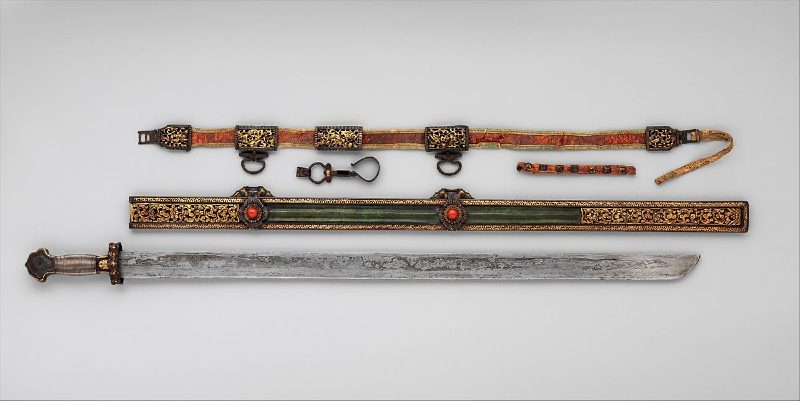
Sword belts varied in craftsmanship and design, often reflecting the culture and period they originated from. The Greek baldric often had bulla or metal studs. The Roman baldric was also studded as shown in tombstone depictions. Other leather sword belts were even handcrafted and covered with embroidery. Some Tibetan sword belts also had matching swords and scabbard, though they were rare.
Best Sword Belts Available Online
Sword belts are used in military and ceremonial dress and are often seen in historical reenactment, costume props, and live-action role-playing or LARP. Whether you want to dress up like a Roman warrior or channel your favorite character, here are the best sword belts we found online:
1. 3rd-Century Roman Baldric
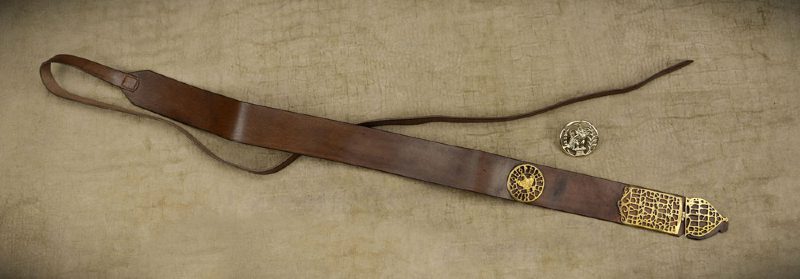
Handcrafted from high-quality leather, this Roman baldric features a wide strap to distribute the overall weight of the sword. It measures 86 1/2 inches or 219 centimeters long and 2 1/4 inches or 5 centimeters wide. Like the historical Roman baldrics, it has no fastener and could be slipped over the head. Constructed from brown leather with brass fittings, this baldric is versatile enough to use beyond Roman battles.
2. Brown Leather Ring Belt
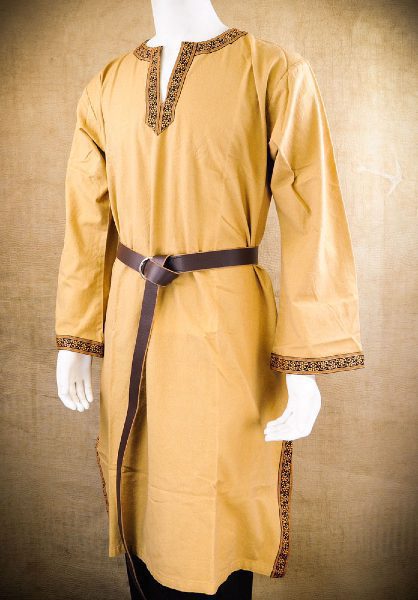
Instead of the traditional belt buckle, this leather belt features a steel ring, allowing you to tie your belt the medieval way. Its rustic design will look great with tunics, medieval long-sleeve tops, and hauberks or long coats of chain mail.
To wear the leather ring belt, slide it through the ring and create a simple knot. It has an overall length of 74 inches or 187 centimeters. However, it does not include a sword hanger or frog to hold your weapon.
3. Black Leather Double Wrap Belt
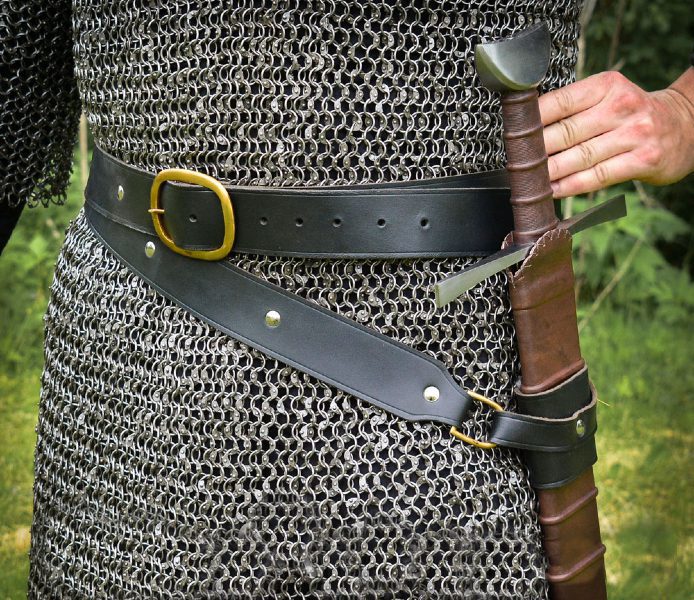
Designed to wrap twice on the waist, this black leather belt already includes a sword holder. Although it is not an accurate depiction of medieval sword belts, it could be a great choice for re-enactors for holding their arming swords, longswords, broadswords, and so on. However, this double wrap belt does not allow carrying two weapons at once. Still, the swordsman could slip a separate sword frog on the belt to do so.
4. Leather Dagger Frog
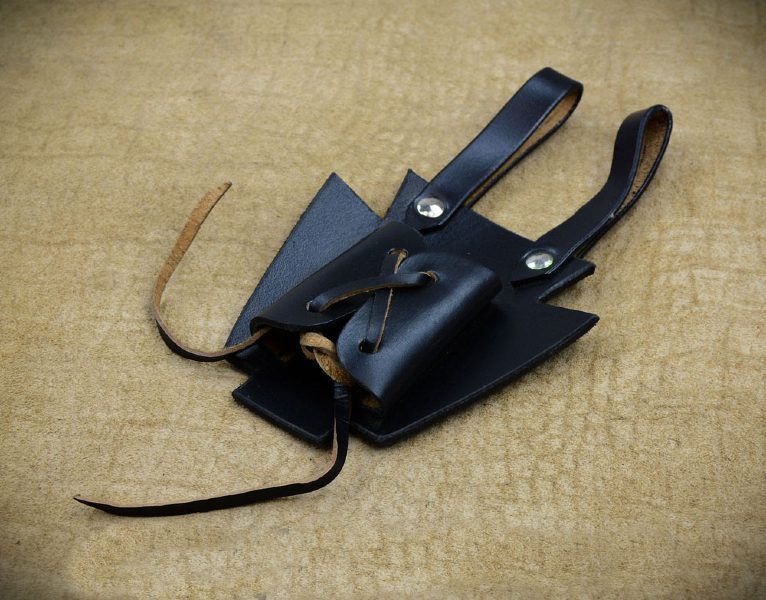
Simple and versatile, this leather dagger frog can be adjusted to fit the sheath or scabbard with its leather lacing. It measures 7.75 inches (19 centimeters) long and 4.75 inches (12 centimeters) wide. Constructed from black leather, it would easily match sword belts and draw the focus on decorative sword mounting.
5. Sword Holder for LARP Sword
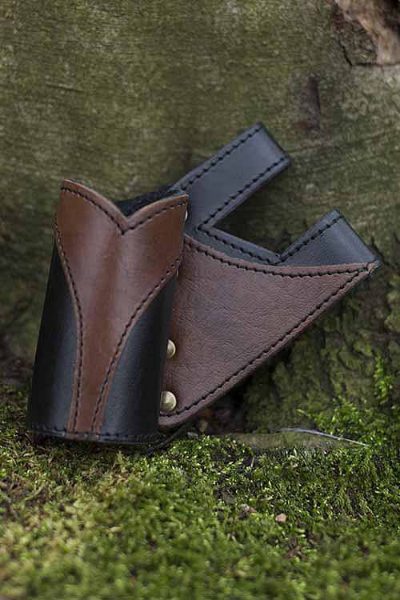
LARP swords lack scabbards but often have relatively broad foam blades. This sword holder measures 7 inches (17 centimeters) long and 4.75 inches (12 centimeters) wide. Its socket has a circumference of approximately 6 inches (15 centimeters), which prevents your weapon from falling without making it too difficult to draw.
However, this leather sword holder is only ideal for narrow, straight, and curved blades and cannot accommodate large cleaver-like blades. Although designed for LARP swords, it could also be utilized for carrying steel maces and axes. Also, its black-and-brown color combination makes it versatile to wear with any sword belt.
History of Sword Belts
Warriors carried swords on their belts as a secondary weapon. The spearman needed a sword in case his polearm broke, and the archer resorted to it when the enemy reached his line. By the 20th century, most of the world had given up the swords and daggers as battlefield weapons in favor of firearms. Therefore, sword belts were only worn on ceremonial occasions.
In Celtic Warfare
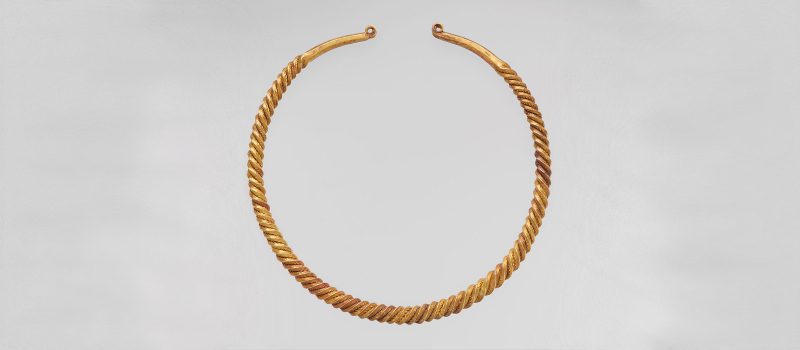
The Gaesatae, mercenary Celts from beyond the Alps, were known for fighting naked, wearing only a sword belt, gold neck torc, and armlet. It became a characteristic of Celts in the battle in the 5th century BCE and after. Some historians believed they discarded their clothes because they would be a hindrance on the battlefield, but the act probably had a religious significance.
While sword belts were functional for holding swords, the torc gave the warriors a sense of being protected by the gods. In 361 BCE, the Roman Manlius defeated a Celtic chieftain and took his torc, acquiring the name Torquatus. At the Battle of Telamon between the Romans and the Celts in 225 BCE, the Gaesatae also fought naked, only wearing their sword belts and torcs.
In the Viking Age
A baldric was used to carry swords before and after the Viking Age, during the 9th to 11th centuries. Some literary accounts suggest that the Viking warriors used a baldric. Those who could not afford a sword carried a fighting knife called sax, also spelled seax, usually carried in a leather sheath hung horizontally from the belt.
In some Icelandic sagas, the Vikings even used peace straps called friðbönd to prevent drawing the sword in anger and mindlessly resorting to violence. However, the exact appearance of these peace straps remains unknown, though some suggest that it had to be untied or unfastened to loosen the sword before it could be drawn from the scabbard.
Conclusion
Sword belts allowed the weapon to be carried in scabbards attached to waist belts, baldrics over the shoulder, or slings. Some military swords also utilized sword frogs for holding the weapon. Today, sword belts remain relevant in the military and ceremonial dress, historical reenactment, and LARP.
